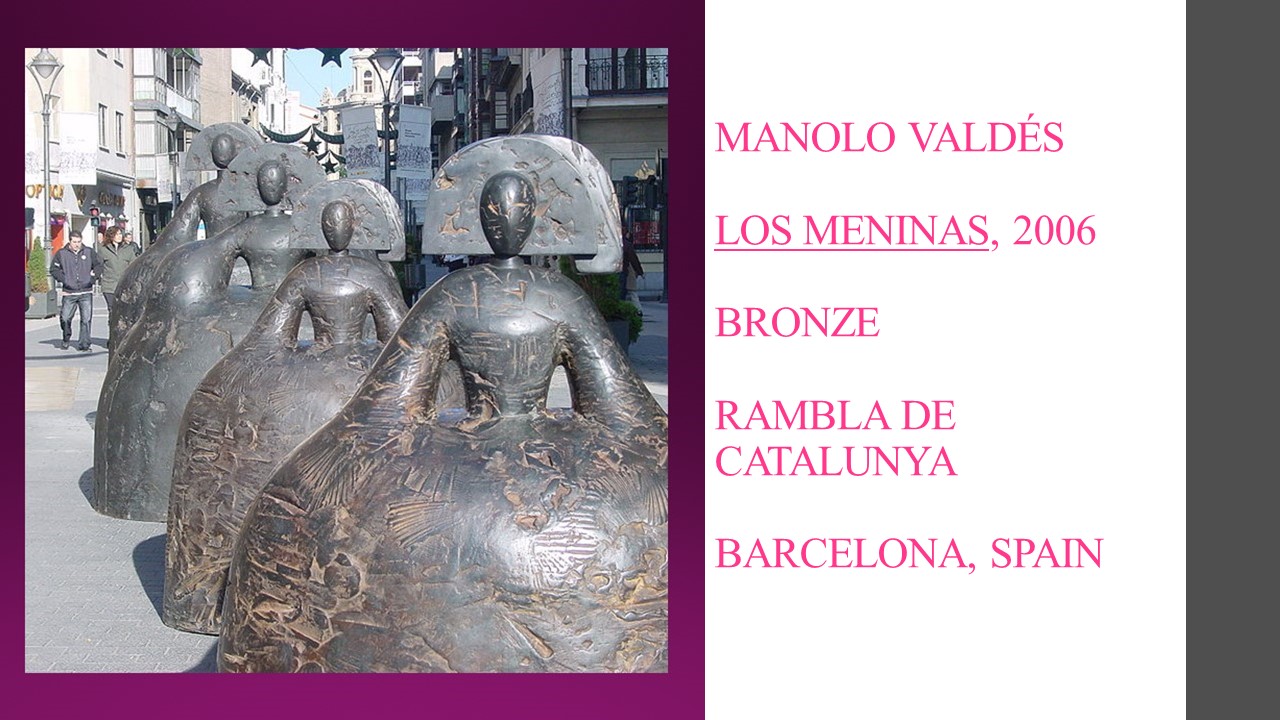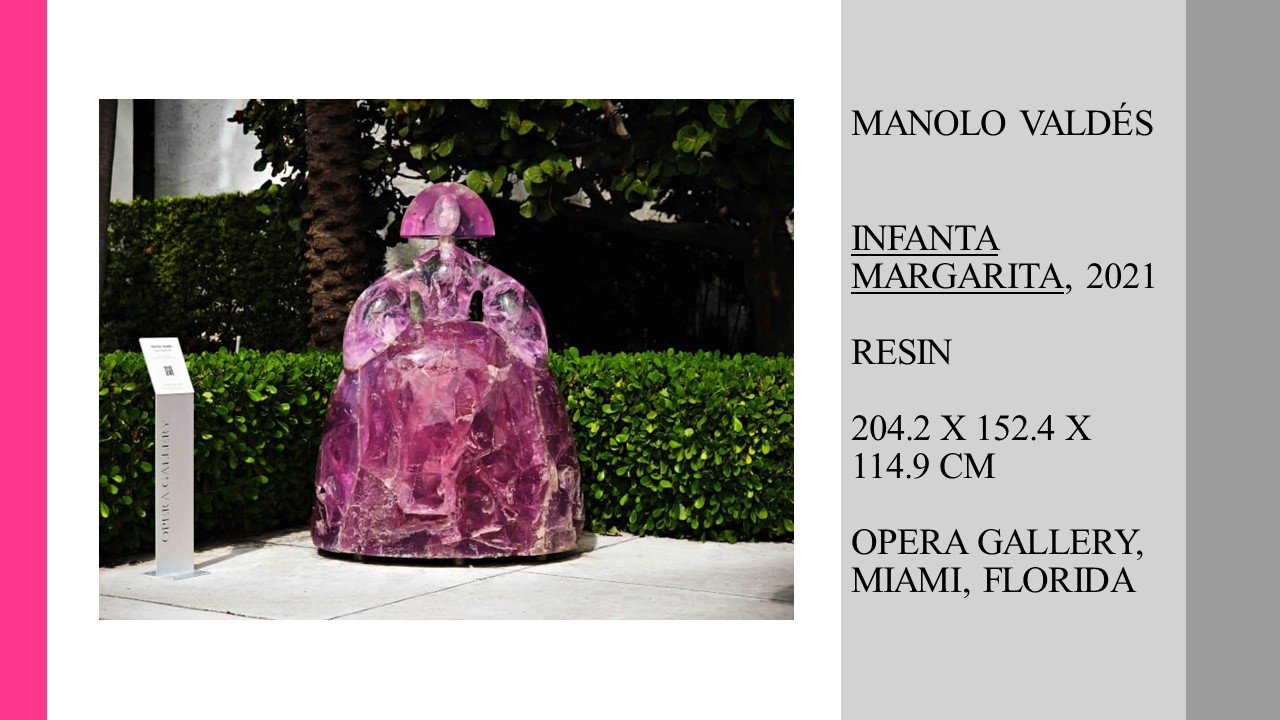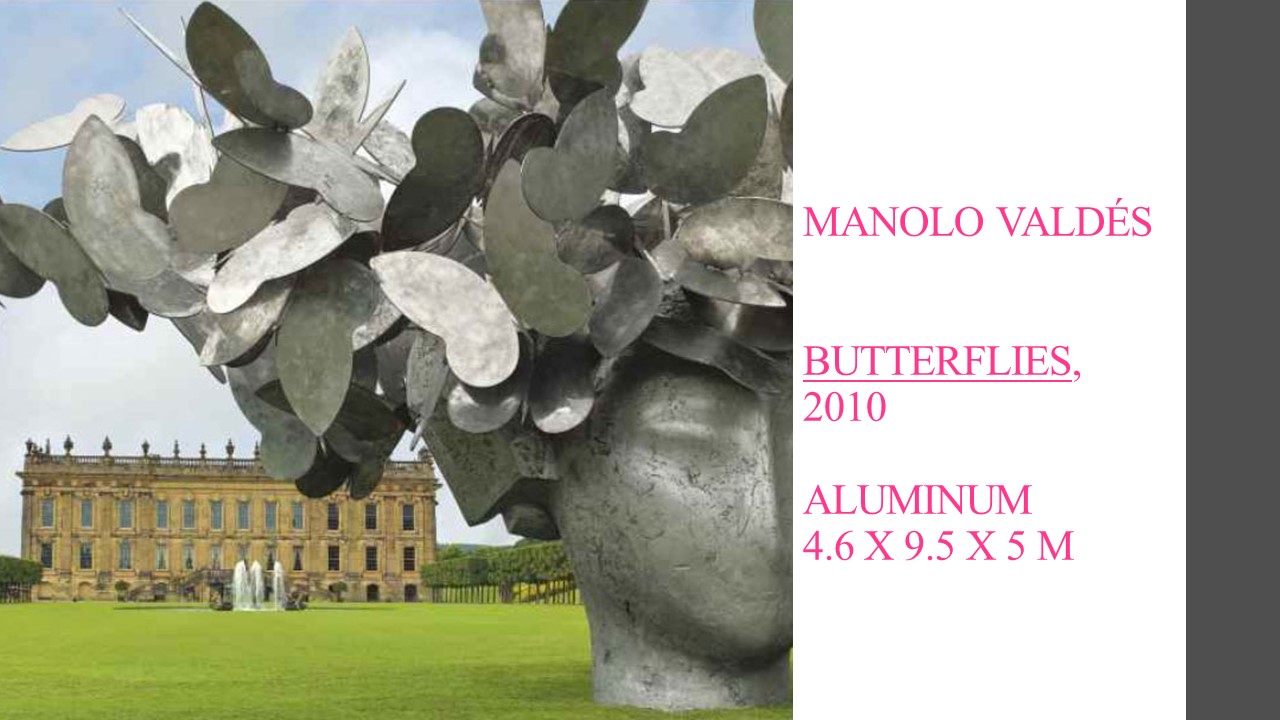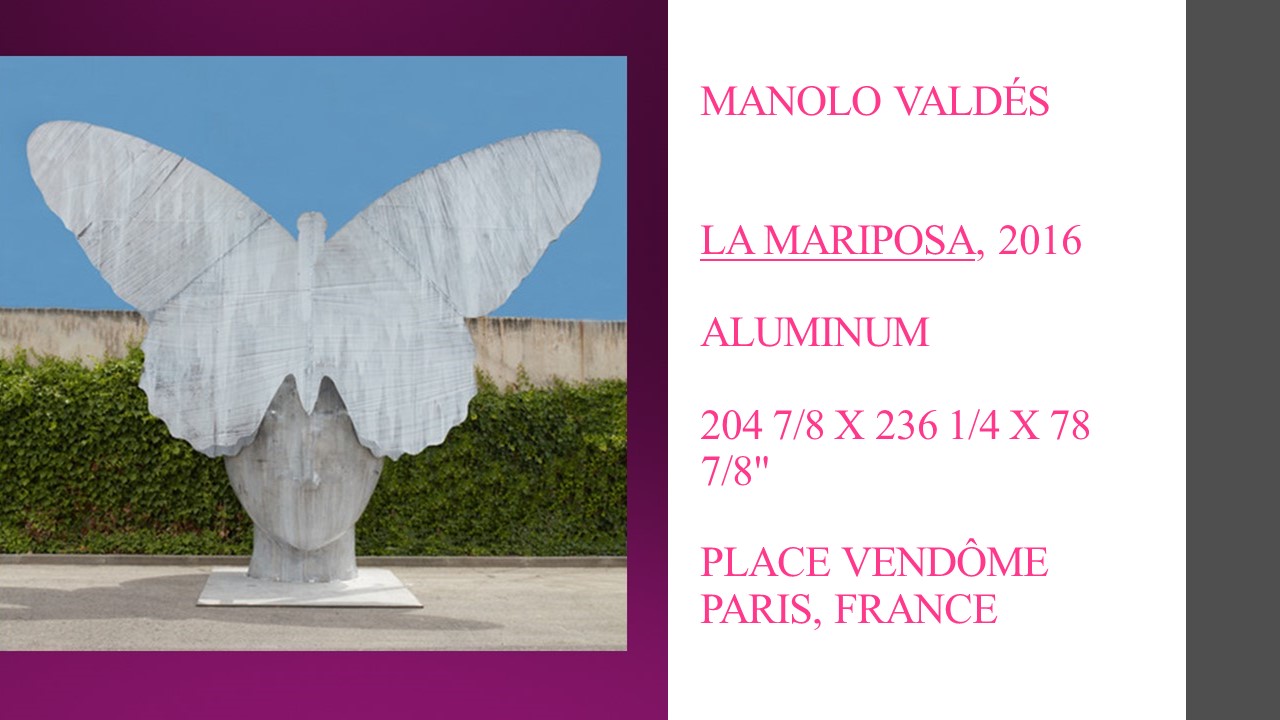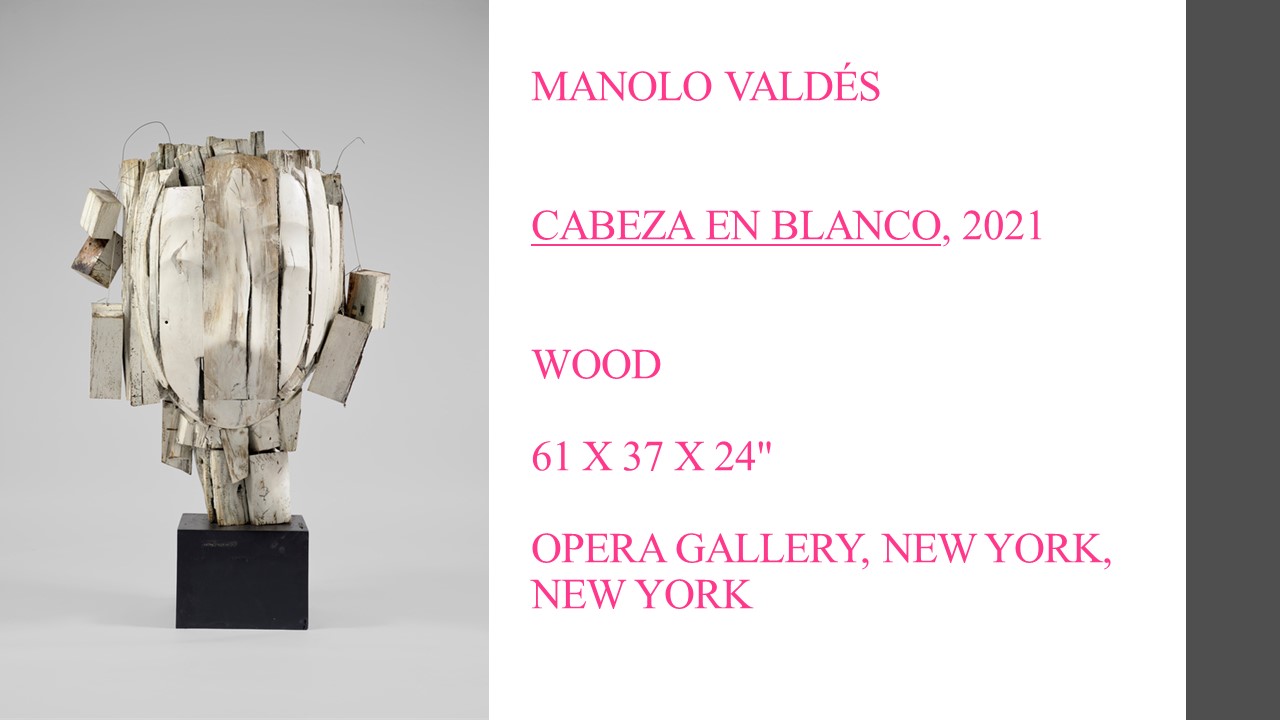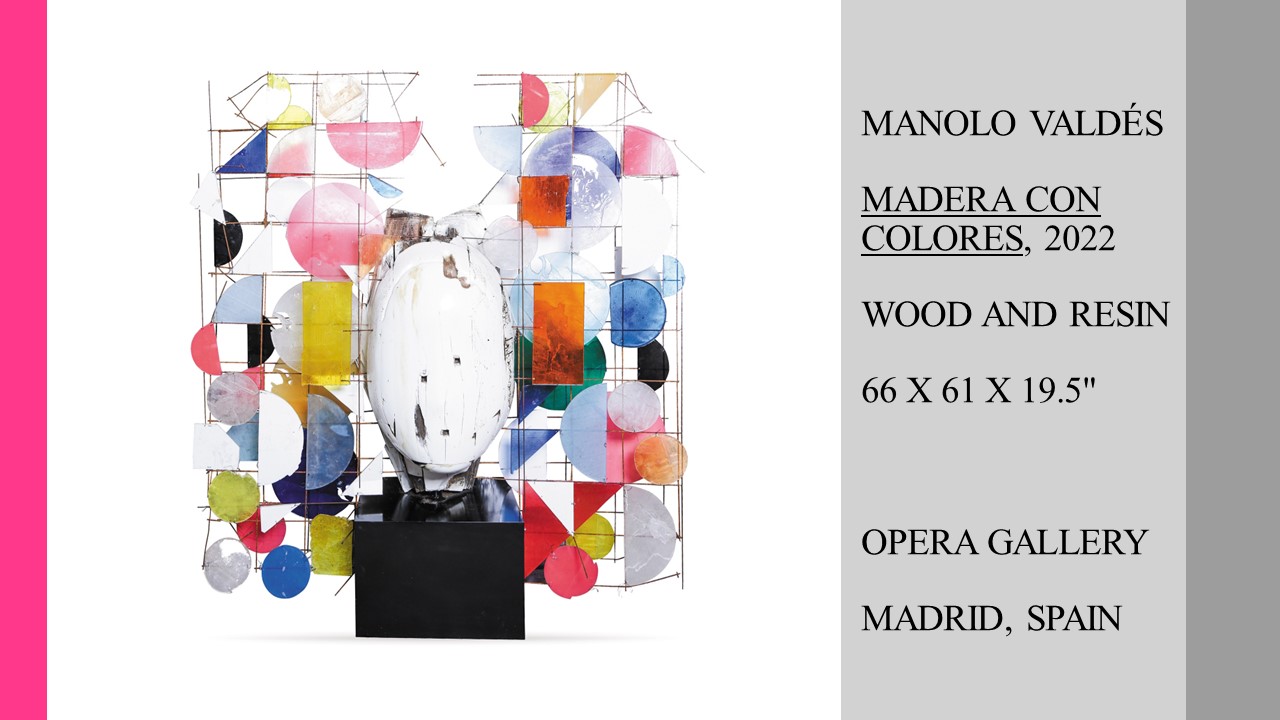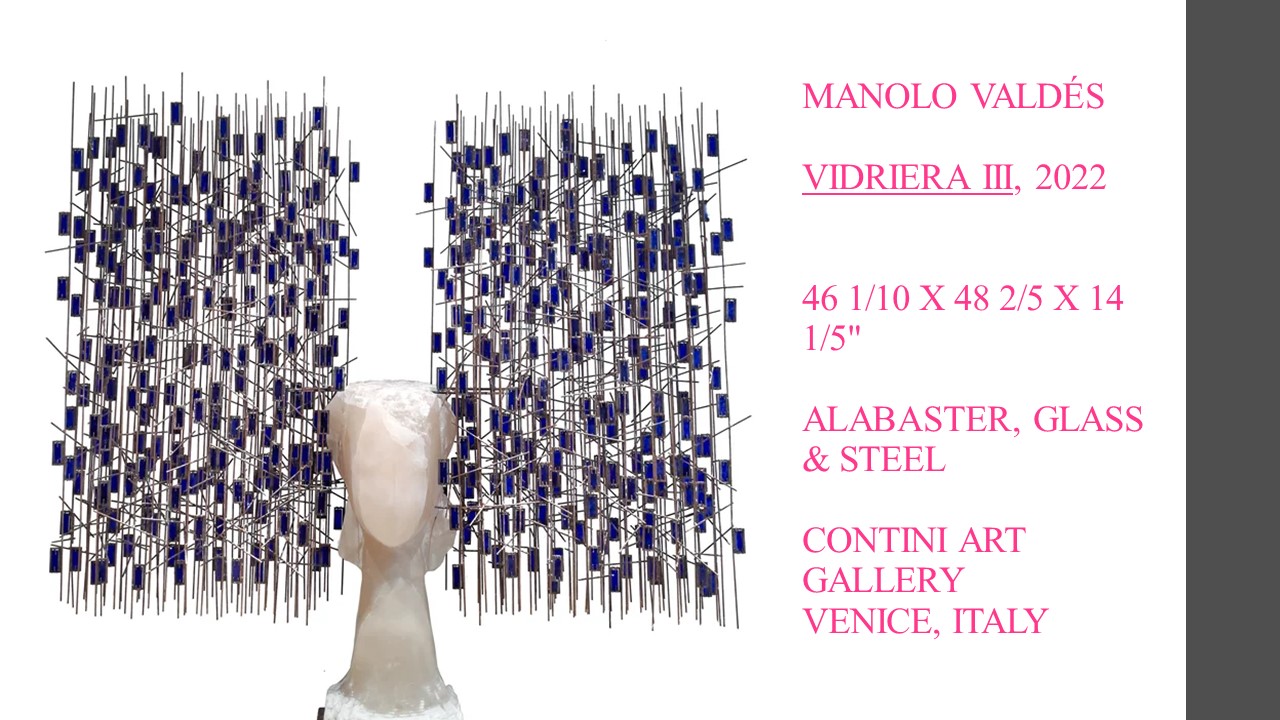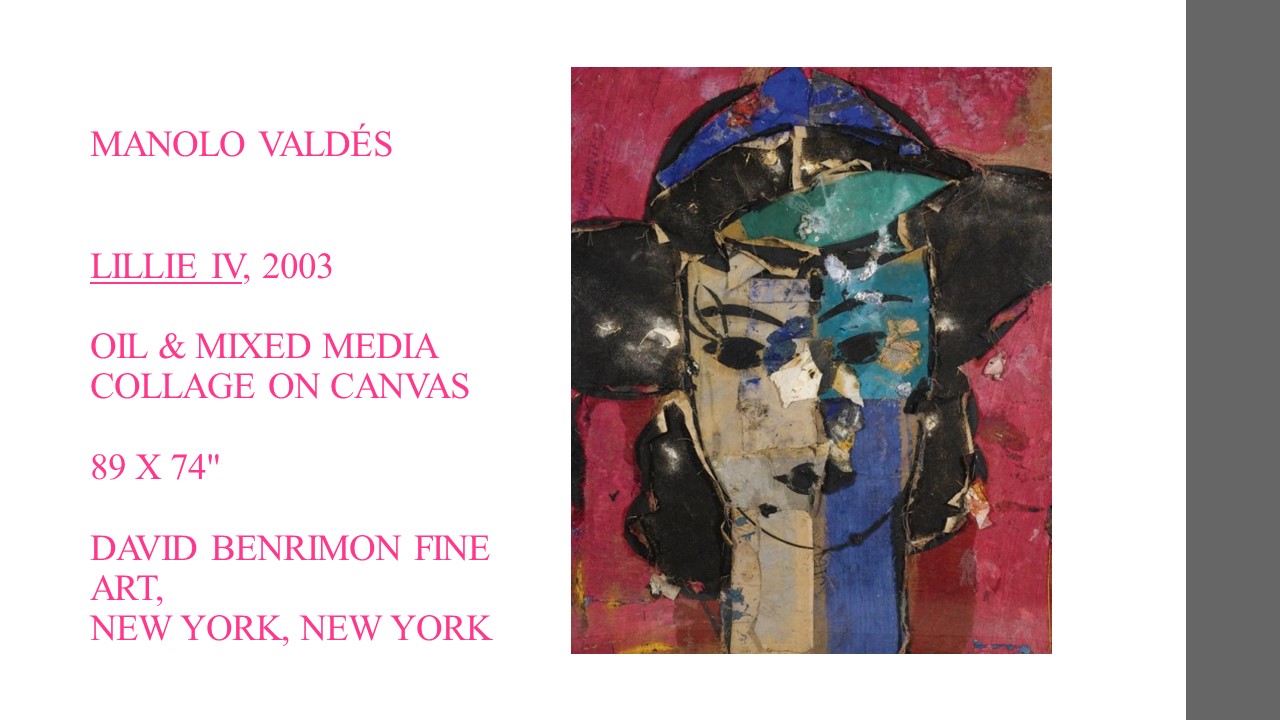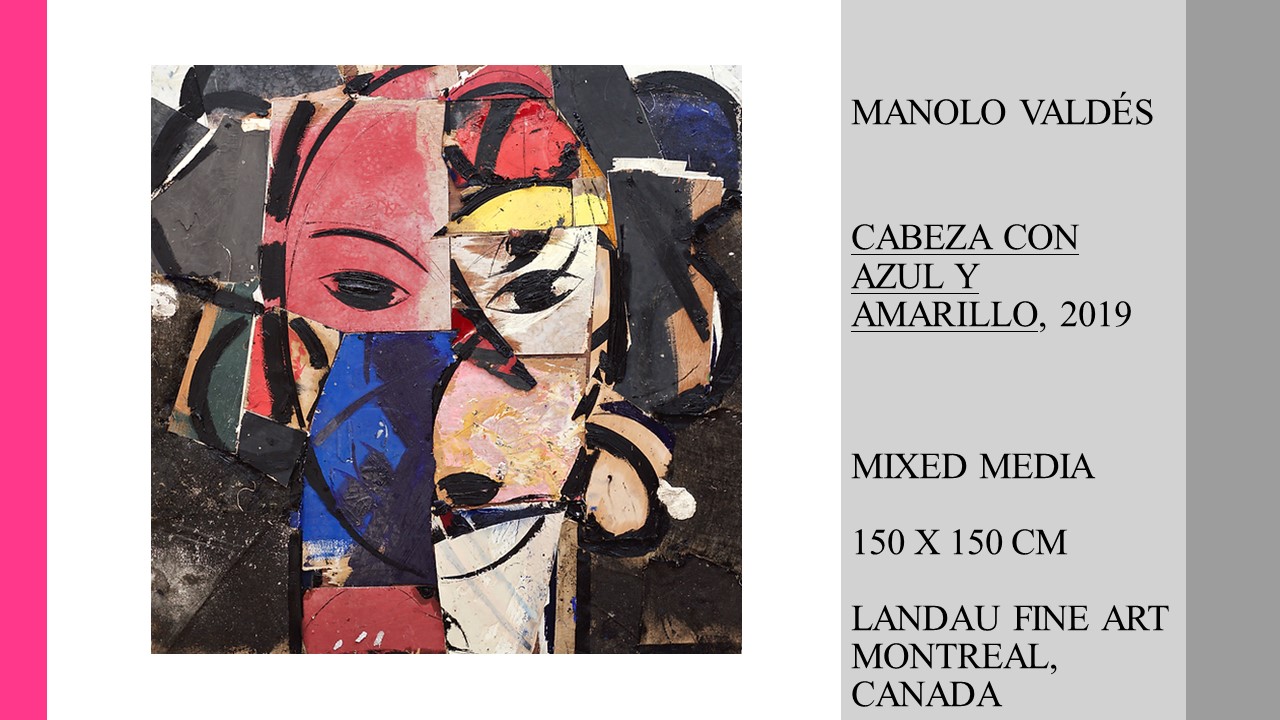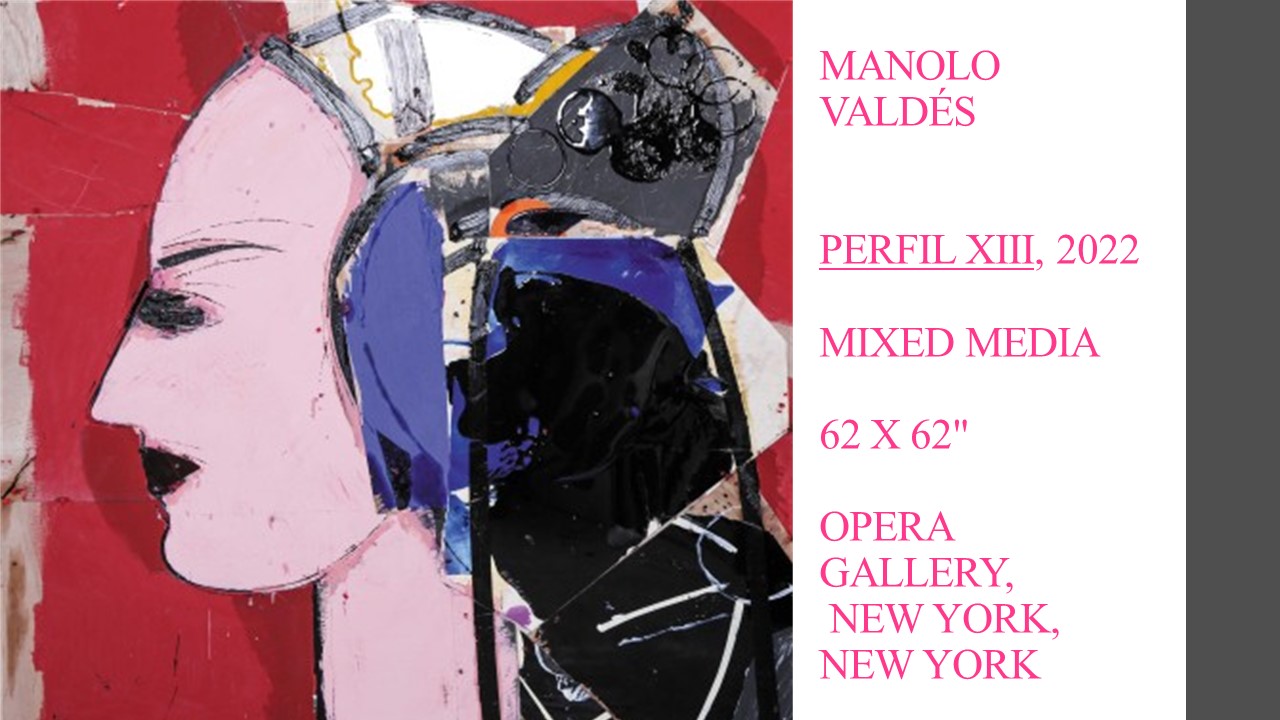Manolo Valdés
Manolo Valdés is one of the most significant Spanish contemporary artists from the 20th century through today. He works in a variety of media, crossing disciplines quickly, and often using one idea as both painting and sculpture, such as in Dama A Caballo V. He is a multidisciplinary master in collage, printmaking, drawing, painting, and sculpture. As an art history aficionado and a frequent museum visitor, he gathers ideas for his work from historical pieces he loves. He translates these ideas in his own style using various unusual materials to achieve his richness of textures. His paintings and sculptures are often influenced by Velázquez, his prints by Rembrandt, Rubens, Picasso, and Matisse. He often turns to literature that comments on art, as it often helps him see a perspective that he may otherwise miss. Everyone reads art differently.
His monumental sculptures reach 12-15 meters tall and substantially affect their venue. The sculptures travel to different parts of the world inspired by an African sculpture exhibition he saw at the Metropolitan. These sculptures are made in Madrid, where he uses equipment, machinery, and robots. They are composed of bronze, painted wood, aluminum, iron, resin, and steel. Valdés, influenced by Diego Velázquez’s painting of Las Meninas, composed his own Las Meninas in sculptural form, etchings, and paintings.
His monumental heads were influenced by a sunbather in Central Park. As he watched, her head was surrounded by butterflies, as in Butterflies. Valdés’ large sculptures of heads were interpreted as smaller sculptures in a variety of materials. Vidriera III is made of alabaster, glass, and steel. Madera Con Colores is made of wood and resin; Cabeza en Blanco is made of rustic white pieces of wood wired together to form the head. His art comes from Pop Art to informal sculpture or abstract. Art that is open and always receptive. There are many nationalities and cultures that live in his work.
The Valdés portraits engage with art history and address representation and appropriation to heritage, style, and tradition. The collage portrait of Perfil XIII is influenced by Ruben’s illustrations, whereas Lillie IV takes inspiration from the Fauve paintings of Henri Matisse. In Cabeza Con Azul y Amarillo, we find the influence of Picasso. The black lines are from the style of Japanese Prints. As you can clearly see, he uses his practice to bring historical work into the present. He has a clear voice in art history and the field of international aesthetics.
In the ’60s and ’70s, Valdés made history by co-founding Equipo Crónica with Rafael Solbes and Juan Antonio Toledo. This group came together during the Pop Art movement in Spain under the dictatorship of Francisco Franco. The group made anti-establishment paintings propagandizing against the government and the Informal artists of the time. They relied on historical images to convert into Pop and made prints for distribution, turning high culture into mass culture.
Galleries representing Valdes around the world include The Rosenbaum Fine Art in Boca Raton and Palm Beach, Oblong Contemporary Art in Dubai and Italy, and Opera in New York, Miami, Miami Bel Harbor, Aspen, London, Monaco, Geneva, Dubai, Beirut, Hong Kong, Seoul, Singapore, and Madrid.
PLEASE SEE PORTFOLIO BELOW







